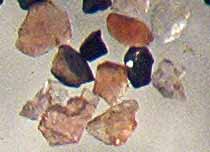The Macoun Field Club’s Nature Study Area
What do you do
in a ‘Study Area’?
We go there a lot all year round and poke into every corner we can think of.

A study in progress
We observe closely,
and make a record of our findings
Sometimes we have a purpose — a “study” — but mostly
we just explore the possibilities until something really grabs our attention
Where is it?
The Macoun Field Club has had a series of study areas over the past 60 years. This one, which we have been studying since 1970, is within the western greenbelt of Canada’s capital, Ottawa, between the former village of Bells Corners on the northeast, and the new Bridlewood development in the west. It is owned and maganged by the National Capital Commission.
Local people will recognize it as being part of Stony Swamp. Everything you can see from the Sarsaparilla Trail observation dock is well within our study area. The land is owned by the National Capital Commission.
What is it like?
It is about a square mile (2.5 square km) of second growth forest and wetlands, with a limited number of public access points and trails. In 1970 it was still part of a rural landscape on the fringes of a growing city; now it is practically embedded within a larger urban environment.
Who is doing the studying?
The members of the Macoun Field Club are school-aged children (up to age 18) who are so keen on nature that they are out in the woods together every second Saturday. Some go on into careers in the natural sciences. The leaders of the Macoun Club are naturalists with varying degrees of scientific background.
What have we learned in 48 years?
- We learned how to find our way around. We made our own vegetation map!
- We started making lists of all the plants and animals.
- We have mapped where some of them occur.
- And we offer every member something easy to study — their very own tree!
To make our map, we traced the pattern of vegetation from aerial photographs and went out in the field to determine what was there. There have been several versions made to keep pace with changes: 1972, 1986, 1992, 2000, 2005 and 2008. The colour version was created especially for the web site.
We have listed:
 Tube Lichen |
 Goldenrod in flower |
 Beech nuts |
 Red Fox hunting mice |
| the lichens | the wildflowers | the trees |
the mammals |
We are currently studying:
 Snapping Turtle |
 Eastern Gray Tree Frog |
 Worker ant (Lasius minutus) |
| reptiles |
amphibians |
the mound-building swamp ant Lasius minutus |
We have studied:
 Sand grains from Ottawa Valley |
|||
| the sand grains in the soil |
Leatherwood Treehoppers | Scale insects on Sugar Maples | invasive earthworms destroying the forest floor |
We have mapped the distribution of:
- certain club mosses
- Butternut trees (being wiped out)
- Hemlock trees (eaten up by Porcupines)
- White Poplar trees (an invasive alien species)
- Nesting birds
- Ruffed Grouse
- Snowshoe Hares

Snowshoe Hare, moulting
- Porcupines
- Beaver lodges
-

Beaver lodge
We also all have our own study trees — a single, unique tree deep in the forest that is our own.
All of the observations on which our studies are based, are recorded in our Nature Journal, a comprehensive notebook we share with the National Capital Commission and the Ottawa Field-Naturalists’ Club.
All photos donated or provided by members and leaders, past and present. Created April 2002; most recently modified May 15, 2016. Section updates: Ant mounds (Jan. 18/ 2010); Amphibians (Dec. 2009); Map (Aug. 11/ 08); Scale insects (Mar. 23/ 07); Tree list (Dec. 5/ 10 — Butternuts, Dec. 29/10, White Poplar, Feb. 9, 2010); Lichens (Nov. 2010); Study Trees (May 1/05); Porcupines (March 9/ 03); Deer (July 22/ 06); Mammals (June 12/ 02), Leatherwood Treehoppers (Aug. 6/ 15).
